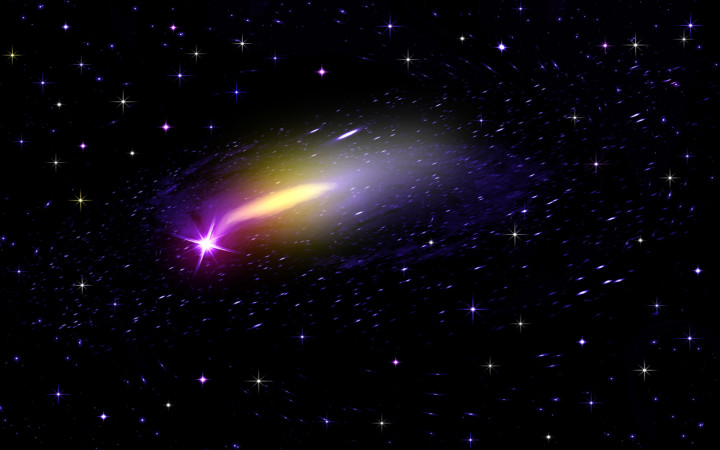If you watch the news regularly, you know that every now and then objects — like meteors and satellites — fall from the sky toward Earth. Some people may worry and believe that the sky itself is falling. But is there anything to get excited about?
Believe it or not, space is filled with an almost-unlimited supply of things that could one day fall to Earth. Some of these things are extremely tiny and some are very big. Some are natural and some are man-made.
For example, orbital debris — also called space junk — is anything man-made that orbits the Earth but is no longer in use. Space junk could include things such as old space vehicles, weather balloons and broken satellites.
Scientists believe there are over 20,000 pieces of space junk that are at least four inches long. These pieces orbit Earth at speeds of up to five miles per second. Space is also filled with rocks and stones that are called meteoroids.
Occasionally, these things will fall from orbit and enter Earth's atmosphere. Fortunately, Earth's atmosphere protects the Earth from most of these objects.
As they fall, objects meet wind resistance from the air in the atmosphere. This resistance causes friction, which creates heat…A LOT of heat. In fact, most objects burn up completely before they ever reach Earth's surface.
For example, many meteoroids fall toward Earth every day. Most burn up in the atmosphere. If a piece of meteoroid is big enough to survive entry into Earth's atmosphere, its hot, glowing surface may create a moving point of light in the sky as it falls. When we see these, we call them meteors, “falling stars" or “shooting stars."
If a meteor survives its trip all the way through the Earth's atmosphere and actually hits the ground, it's then called a meteorite. Many meteorites reach Earth every year, but the probability of being hit by one is almost zero. Only four people in recent history have been struck by a meteorite, and none were seriously injured.
The odds of being hit by space junk are about the same. Experts believe there is only one confirmed case of someone ever being hit by a piece of space junk.
In 1997, Lottie Williams of Tulsa, Oklahoma, was hit on the shoulder while walking in the park. Scientists believe she was hit with a part of what used to be the Delta II rocket. The piece of space junk weighed about as much as an empty soda can and felt like someone tapping her on the shoulder.
So the next time you hear about a meteoroid or old satellite falling toward Earth, don't worry. Just remember that the sky is a big place, the surface of Earth is huge and human beings are tiny in comparison. Also, most of Earth's surface is taken up by the world's oceans.
When an old satellite fell to Earth in late-September 2011, the odds of getting hit by debris from the falling satellite were about 1 in 100 trillion. By way of comparison, your odds of getting struck by lightning are about 1 in 60,000.
But what about catastrophic meteorite collisions? For example, scientists believe a meteorite a few miles wide hit Earth about 65 million years ago. It created the Chicxulub crater in the Gulf of Mexico and caused the extinction of the dinosaurs.
Such catastrophic events are extremely rare. Experts believe they only happen every 100 million years or so. So you can rest easy, because we also have a worldwide community of scientists who now keep a close eye on the skies for things that might fall to Earth.




